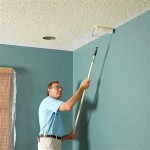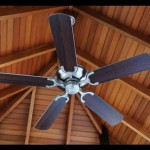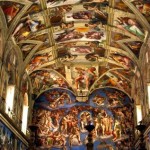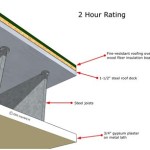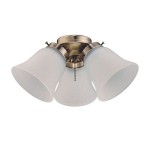Flush Mount Ceiling Light Parts: A Comprehensive Guide
Flush mount ceiling lights, also referred to as flush fixtures, are a popular choice for illuminating rooms due to their sleek and minimalist design. These lights sit close to the ceiling, making them an ideal option for rooms with low ceilings or limited space. While the overall design may appear simple, flush mount ceiling lights are comprised of several essential parts that work together to deliver light and ensure proper functionality.
1. The Ceiling Plate: The Foundation of the Fixture
The ceiling plate is the base of a flush mount ceiling light and serves as the anchor point for the entire fixture. Typically made from metal, the ceiling plate is designed to secure the light to the electrical junction box in the ceiling. This plate often comes in different sizes and finishes to complement the overall design of the fixture.
Many ceiling plates incorporate a decorative element, adding a touch of personality to the fixture. Some intricate designs include details such as floral patterns, intricate carvings, or geometric shapes. The ceiling plate not only holds the fixture but also provides an aesthetic finish, blending seamlessly with the ceiling and adding a touch of elegance to the room.
2. The Housing: Encasing the Electrical Components
The housing is the central component of the flush mount ceiling light, housing the electrical wiring and the light bulb socket. It is typically made of metal, plastic, or a combination of both, and its primary function is to protect the electrical components and provide a secure mounting point for the fixture.
Different housing designs can influence the appearance of the fixture. Some housings are more minimalist and blend seamlessly with the ceiling, while others feature decorative elements or unique shapes that make a statement. The choice of housing material can also impact the fixture's appearance, adding a touch of modern elegance with metal or a more traditional feel with wood.
3. The Light Bulb Socket: Holding the Light Source
The light bulb socket is a crucial component of any flush mount ceiling light, as it houses the light bulb, which provides illumination. These sockets are typically designed for a specific type of light bulb, such as an Edison screw (E12, E26, E27) or a bayonet cap (B22), and the socket type determines the type of bulb compatible with the fixture.
The light bulb socket also plays a role in the aesthetic appeal of the fixture. Some sockets are hidden within the housing, while others are decorative and visible, contributing to the overall design of the fixture. The choice of bulb socket influences the type of bulbs that can be used, impacting the light output and overall aesthetic of the fixture.
4. The Diffuser or Shade: Controlling Light Distribution
The diffuser, or shade, is the component that covers the light bulb, controlling the light distribution and brightness. It can be made from a variety of materials, including glass, acrylic, fabric, or metal, each offering different light diffusion properties and aesthetic qualities.
Diffusers come in various shapes and sizes, from simple clear glass to intricate patterned designs. The choice of diffuser material and design greatly influences the light output and ambiance of the fixture. A frosted glass diffuser creates a soft, ambient light, while a clear glass diffuser provides a more focused and brighter light. Fabric shades offer warm, diffused light, while metal shades create a more industrial or modern aesthetic.
5. The Mounting Hardware: Ensuring Secure Installation
The mounting hardware is the system that connects the flush mount ceiling light to the ceiling. It typically includes screws, nuts, and a decorative trim piece. The hardware ensures a secure and stable installation while maintaining the aesthetic appeal of the fixture.
The mounting hardware chosen for a flush mount ceiling light depends on the specific fixture and the type of ceiling material. Screws and nuts are typically made from metal, while decorative trim pieces can be made from metal, plastic, or wood, matching the overall design of the fixture.
6. The Wiring: Connecting Power to the Fixture
The wiring system is the lifeline of a flush mount ceiling light, connecting the electrical power from the junction box to the fixture. This system typically includes wires made of copper or aluminum, insulated to prevent electrical shocks. The wiring configuration varies based on the fixture's design and the electrical code requirements in the region.
It is crucial to ensure the wiring is properly installed and compatible with the electrical system. Incorrect wiring can lead to electrical hazards, so it is always advisable to consult a qualified electrician for any installation or repair work.

Flush Mount Light Fixture Parts Ceiling Lights

Lamp Parts Lot Arm Modern Vintage Flush Mount Ceiling Metal Light Socket Ornate Ebay

Vintage Hardware Lighting Ceiling Lights Mount Light Fixtures Fixture Parts

Lb72122 Led Flush Mount Ceiling Light 16 Inch Antique Brushed Nickel 23w 180w Equivalent 1610 Lumens 3000k Warm White Etl Dlc Listed Energy Star Dimma Fixtures

Complete Antique Brass Lighting Fixture Includes Inside Sandblasted Glass Lamp Shade 68450a Supply Quality Parts Since 1952

Elegant Satin Nickel Ceiling Light Fixture Base

4 Inch Fitter Wired Polished Nickel Finish Brass Flush Mount Fixture 69451n Antique Lamp Supply Quality Parts Since 1952

6 Inch Fitter Wired Antique Brass Flush Mount Fixture 69452a Lamp Supply Quality Parts Since 1952

Mainstays 11 Classic Flush Mount Ceiling Light Broe Finish Frosted Glass Shade Bulb Not Included Walmart Com
Energetic Lighting 14 Led Flush Mount Light Costco

